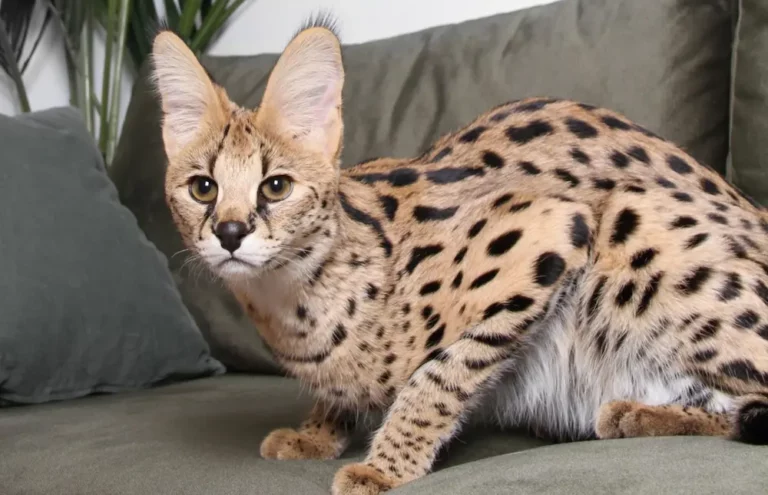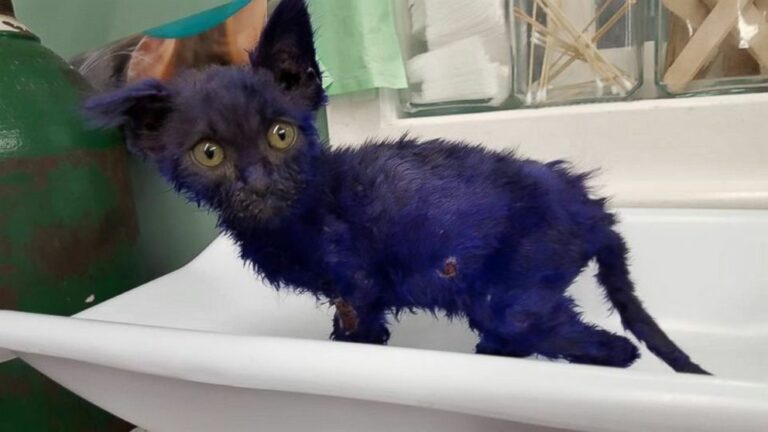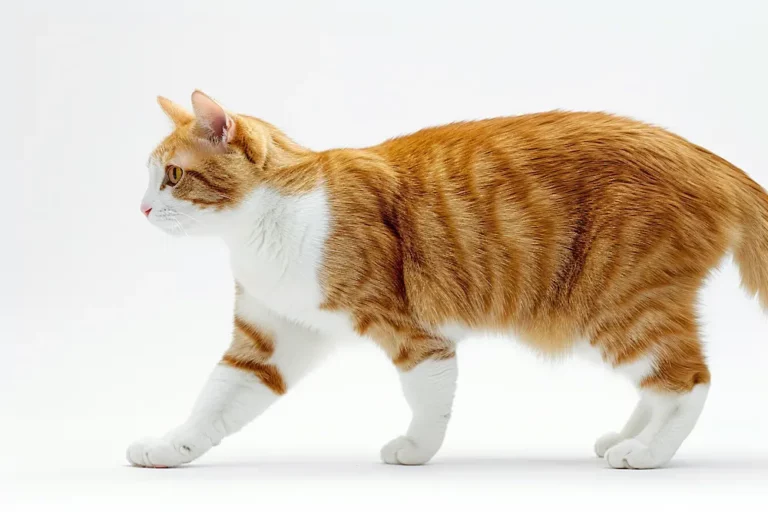Everything You Need To Know About Russian Blue Cat Breed
Have you ever been mesmerized by the stunning, silvery-blue coat of a Russian Blue
These elegant felines are not just a feast for the eyes; they’re known for their gentle temperament and intelligent nature, making them a cherished companion in homes around the world.
But did you know that the Russian Blue has a history as intriguing as its appearance, tracing back to the port of Arkhangelsk, Russia?
In this guide, I’ll take you on a journey through the enchanting world of Russian Blue cats.
From their rich history and unique characteristics to essential care tips that ensure they live a healthy, happy life, we’ll cover everything you need to know about these captivating creatures.
Whether you’re a seasoned owner or considering welcoming one into your home, this article promises to enrich your understanding and appreciation of the breed.
Let’s dive into the ultimate guide to Russian Blue cats and discover why they’re so adored across the globe.
The Origin and History of Russian Blue Cats
I’ve always been fascinated by the rich history and unique origin stories of
Russian Blue cats are no exception.
They hail from the frosty port of Arkhangelsk, Russia, earning them the moniker Archangel Blues.
Imagine the majestic ships coming into the harbor, with these elegant cats aboard, captivating sailors and traders with their striking silvery-blue coats and bright green eyes.
The journey of the Russian Blue from the northern Russian port to becoming a beloved household pet across the globe is nothing short of remarkable.
By the 19th century, their popularity had begun to spread beyond Europe, thanks to their gentle temperament and stunning appearance.
Sailors often brought these cats to other countries, which helped establish their presence worldwide.
Understanding this breed’s backstory not only adds to their allure but also highlights their resilience and adaptability.
Therefore, when you bring a Russian Blue into your home, you’re not just adopting a pet; you’re welcoming a piece of history.
Their adaptation from the rugged climate of Arkhangelsk to cozy indoor living is a testament to their versatile nature.
However, it’s essential to remember their origins when considering their care.
For instance, despite their plush coats, Russian Blues are actually quite low maintenance.
Their dense, short fur requires minimal grooming, making them an excellent option for busy
Furthermore, understanding the Russian Blue
Knowing they were once valued for their rodent-catching prowess aboard ships traveling from Russia can bring a smile to your face when you see your Russian Blue chasing a toy mouse across the living room floor.
The essence of caring for a Russian Blue
By acknowledging their origins and adapting their care to suit their personality and health requirements, you can ensure a happy, healthy life for your Russian Blue, thereby honoring the legacy of this remarkable breed.
Characteristics of the Russian Blue Cat Breed
Physical Attributes
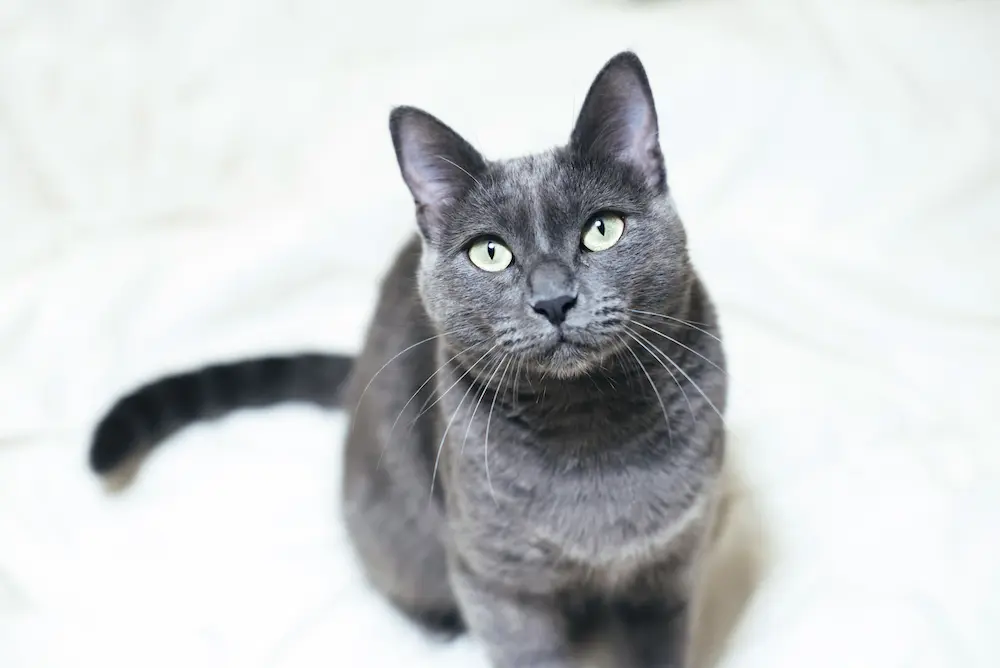
Russian Blue cats are a blend of elegance and functionality, striking an impressive pose with their noticeable features.
They carry a medium-sized body that’s both muscular and sleek, allowing them to move with an elegant gait that’s truly captivating.
When I first laid eyes on a Russian Blue, its distinctive silver-blue coat seemed almost ethereal.
This dense, plush fur feels incredibly soft to the touch, a real pleasure during petting sessions. Considering their coat, it’s easy to understand why this breed stands out in a crowd.
Their vivid green eyes are another hallmark, adding to their mystique.
These are not just beautiful; they seem to peer into your soul, making the Russian Blue look wise beyond their years.
Their fine-boned structure is complemented by long legs, which add to their graceful appearance.
Males typically weigh between 10 to 12 pounds, while females are a bit lighter, ranging from 7 to 10 pounds.
Therefore, maintaining a healthy weight is essential for their overall well-being.
One thing that surprised me is their double-layered coat, which does not require extensive grooming. A weekly brushing suffices to keep it in top condition.
This low-maintenance aspect, coupled with their stunning looks, makes them a popular choice among
Personality and Temperament
Moving past their physical attributes, Russian Blues are equally remarkable for their personality and temperament.
They embody a gentle, shy nature at first glance but reveal a warm, affectionate side once they warm up to you.
Their loyalty is unparalleled, often forming strong bonds with their family members.
This breed’s intelligence is not to be underestimated; they’re known for their curiosity and ability to solve problems, sometimes even learning to open doors or finding innovative ways to reach their favorite spots.
Despite their reserved demeanor with strangers, Russian Blues create a harmonious living environment.
They’re quiet companions, making them ideal for families or individuals seeking a calm pet.
Furthermore, their playful side emerges in the comfort of their familiar surroundings, delighting in interactive toys and games.
One aspect I find especially compelling about Russian Blues is their adaptability.
Whether you live in a bustling city apartment or a spacious home in the countryside, they adjust remarkably well to different living situations.
This flexibility, combined with their gentle nature, makes them suitable for both seasoned
In my experience, understanding and catering to the characteristics of the Russian Blue
Regular veterinary checkups, mindful nutrition, and engaging playtime are key to keeping your Russian Blue happy and healthy.
Remember, although they might not require constant attention, cherishing the moments you spend together strengthens your bond and ensures a joyful companionship.
Health and Lifespan
Diving into the care of Russian Blue cats, it’s pivotal to understand their health and lifespan to ensure they lead a happy and full life.
I’ve gathered a few insights and practical advice to guide you through the potential health concerns and the remarkable longevity of this elegant breed.
My aim is to not only inform you but equip you with the knowledge to foster a thriving environment for your feline friend.
Common Health Issues
Firstly, let’s tackle the health aspect.
Russian Blues are generally a hearty breed, but they’re not exempt from health issues that
Hypertrophic Cardiomyopathy (HCM), a condition leading to the thickening of the heart muscle, tops the list.
It’s vital to regularly monitor their heart health with a veterinarian, considering genetic predispositions. Look for signs of distress, like lessened activity levels or breathing difficulties, and consult your vet immediately if these arise.
Urinary tract problems and bladder stones also rank among concerns.
Regular check-ups can catch these issues early, and maintaining a diet that supports urinary health is key.
Make sure their water intake is ample; a
Obesity is another concern, potentially leading to diabetes and joint issues.
I cannot stress enough how vital weight management is.
Measuring their food, choosing high-quality kibble, and ensuring they have plenty of playtimes to stay active are all effective strategies to keep their weight in check.
Lastly, dental issues shouldn’t be ignored.
A good dental care routine, including brushing their teeth and providing dental health chews, combined with regular veterinary dental checkups, can keep periodontal diseases at bay.
Life Expectancy
Moving onto a brighter note, the lifespan of a Russian Blue can be impressively long, with many living well into their late teens and some even reaching their early twenties with the right care.
Their longevity is a testament to the breed’s hardiness and the care they receive from their owners.
To maximize their lifespan, focus on preventive care.
This means keeping up with vaccinations, regular vet checkups, and prompt medical attention when issues arise.
A balanced diet plays a crucial role as well; it provides the necessary nutrients to support overall health and vitality.
Engaging with your Russian Blue, offering puzzle toys, and creating an enriching environment can encourage physical activity and mental stimulation.
Stress reduction is also critical; these felines appreciate routine and a calm household.
Understanding and preemptively managing health concerns, combined with providing a loving and stable environment, can help your Russian Blue lead a long, joyous life.
I’ve found that attentive care not only strengthens the bond with your feline companion but emboldens their wellbeing, paving the way for many happy years together.
Caring for Your Russian Blue
Caring for a Russian Blue
My experience with these elegant felines has taught me that while they’re relatively low maintenance, certain aspects of their care can’t be overlooked.
Let’s dive into the specifics of diet and nutrition needs, followed by grooming essentials.
Diet and Nutrition Needs
Feeding your Russian Blue a balanced diet is paramount to their health and longevity.
These cats are known for their propensity to gain weight if their diet isn’t carefully managed.
Therefore, portion control and the quality of food are aspects I pay close attention to.
First off, high-quality commercial
Remember, in their natural habitat, cats don’t eat a lot of carbohydrates.
So, a diet that mimics this natural feeding pattern contributes to a healthy weight.
Foods with real meat as the first ingredient, not fillers or by-products, are what I always recommend.
Additionally, hydration plays a critical role in your Russian Blue’s diet.
Even though they might not drink a lot of water willingly, ensuring they get moisture from their food is a clever workaround.
Wet food can be a good source of hydration, but always have fresh water available, too.
For those who are more adventurous, preparing homemade meals for your Russian Blue can be a rewarding experience.
However, consult with a veterinarian to create a nutritionally balanced meal plan. It’s crucial to cover all nutritional bases to avoid deficiencies.
Grooming Essentials
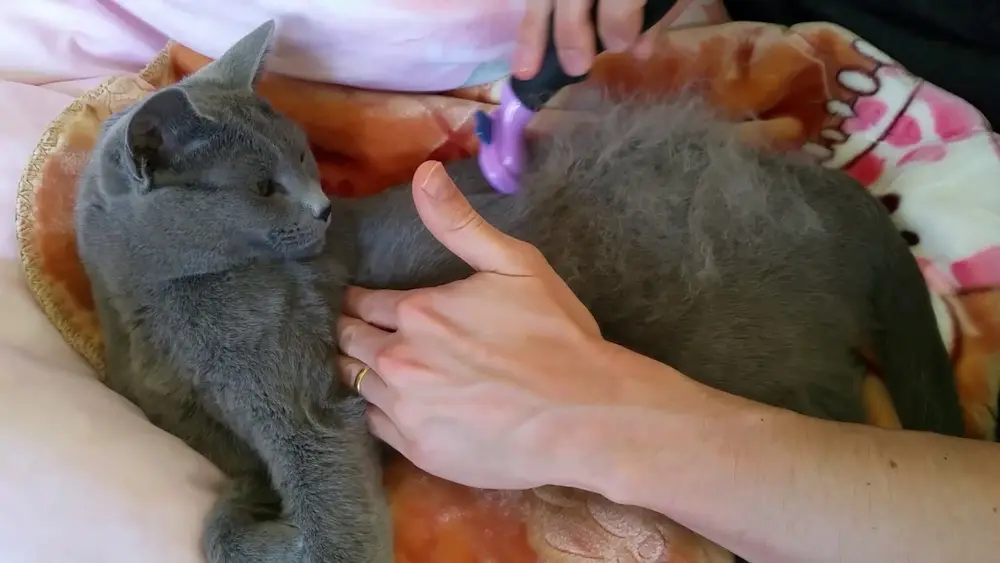
Russian Blues have a stunning, dense coat that’s truly a hallmark of the breed.
Despite its luxurious look, it’s surprisingly easy to care for.
Their double coat benefits from regular grooming, but fortunately, they don’t shed excessively.
A weekly brushing session is a great way to bond with your Russian Blue while keeping their coat in top condition.
I use a soft-bristle brush or a fine-toothed comb to gently remove any loose fur.
This not only keeps their coat glossy but also reduces the amount of hair around your home.
While grooming, it’s also a perfect time to conduct a quick health check. I look out for any signs of skin irritation, lumps, or anything unusual.
Paying attention to their ears, eyes, and nails during these sessions is equally important.
Keeping their nails trimmed and ears clean contributes to their overall well-being.
Moreover, although Russian Blues groom themselves meticulously, they might occasionally need a bath.
It’s rare, but a gentle bath can help if they’ve gotten into something particularly messy.
Using a
Training and Socialization
Behavior and Socialization Tips
Training and socialization are pivotal in nurturing a well-mannered Russian Blue
Known for their intelligence, these cats grasp training concepts quickly.
Yet, their shy nature demands a gentle approach.
Start with basic commands like ‘come’ or ‘sit’.
Use treats as rewards to reinforce positive behavior.
Consistency is key.
A routine helps them understand what’s expected, reducing their stress in the process.
Socialization introduces them to new experiences, preventing skittish behavior around guests or in unfamiliar settings.
Introduce new people, pets, and environments gradually.
Short, positive encounters build confidence.
Equip your home with various toys and engaging activities to stimulate their curious minds and encourage exploration.
Remember, patience wins.
Rushing a Russian Blue might backfire, causing retreat rather than engagement.
Monitor their comfort levels, adjusting your approach as needed.
They might not take to every person or pet immediately, but gentle persistence often yields a sociable, adaptable
Compatibility with Other Pets

Russian Blues can flourish in a multi-pet household when introduced properly.
They might be cautious at first but don’t mistake this for aloofness.
Here’s how to cultivate harmony among pets:
- Introduce Slowly: Start introductions through a barrier, like a baby gate, allowing them to sniff and see each other without direct contact. This minimizes the potential for conflict.
- Exchange Scents: Swap bedding between the new arrival and existing pets. Familiarity with each other’s scent eases tension.
- Supervised Interactions: Initial face-to-face meetings should be short and supervised. Look for signs of stress or aggression. Gradually increase their time together as they become more comfortable.
- Separate Resources: Provide separate feeding areas, litter boxes, and resting spots to reduce competition and territorial behavior.
- Positive Reinforcement: Reward calm, non-aggressive behavior with treats and praise. Associating positive experiences with each other’s presence builds trust.
Integrating a Russian Blue into a house with pets takes time and patience, but it’s entirely possible.
They’re known to bond with dogs and cats alike, given the right circumstances.
My own Russian Blue, Lina, was hesitant around my Labrador, Max, at first.
However, by following these steps, they now enjoy each other’s company.
It’s heartwarming to see Lina curl up next to Max, a testament to their compatibility when properly socialized.
By understanding and catering to the unique temperament of Russian Blues, you can create a cohesive and peaceful animal kingdom under your roof.
Their amiable nature, coupled with a thoughtful introduction, ensures a seamless integration with other pets, fostering a lasting bond among your furry family members.
Adopting or Buying Russian Blue Cats
After understanding the history, health, and caring essentials for Russian Blue cats, you might be considering bringing one into your home.
Whether you’re leaning toward adopting or buying, it’s crucial to proceed with knowledge and caution.
I’ve navigated these waters before, and I’m here to share some insights that could help you find your new feline friend.
How to Find a Reputable Breeder
Finding a reputable breeder is akin to solving a complex puzzle.
It requires diligence, patience, and a bit of detective work.
From my experience, a great starting point is to seek recommendations from
These entities typically have lists of certified breeders who adhere to ethical breeding practices.
Once you’ve got some names, it’s time for research.
A good breeder doesn’t just sell cats; they ensure their kittens are healthy and well-socialized.
Therefore, visit the breeder’s premises if possible.
This visit is pivotal.
It lets you observe the breeding cats’ living conditions, health, and temperament.
You’re looking for cats that are lively, clean, and comfortable around people.
Furthermore, a trustworthy breeder will be transparent about their breeding practices.
They should provide health clearances for the kittens and their parents, showing they’re free from genetic diseases common to Russian Blues, like hypertrophic cardiomyopathy (HCM).
Additionally, they won’t shy away from answering your questions about the breed, health issues, or how they’ve socialized their kittens.
An authentic breeder aims for the cats’ welfare over profit.
Therefore, they’ll likely have a waiting list and won’t pressure you into making a quick decision.
They’ll also ask you questions to ensure you’re a suitable match for their kitten—signalling their care for the cats’ long-term well-being.
Adoption Options
Adoption is a noble alternative to buying a
Russian Blues, or mixes displaying their elegant traits, often find their way into shelters.
Adopting offers a loving home to a
The adoption fee typically covers initial veterinary checks, vaccinations, microchipping, and often spaying or neutering.
These inclusions make adoption not only an economical choice but also a convenient one.
To start the adoption process, visit local shelters or search online pet adoption platforms.
Platforms like Petfinder can filter searches by breed, so you can easily find Russian Blues or similar cats available for adoption.
However, remember that shelters might not always have purebred Russian Blues.
But, don’t overlook the value of a mix. They often share the same stunning coat and delightful temperament.
Frequently Asked Questions
Do Russian Blue cats like to be held?
Russian Blue cats tend to be affectionate with their owners and may enjoy being held and cuddled if they feel safe and comfortable.
However, they might be reserved around strangers.
How much is a Russian Blue cat worth?
The cost of a Russian Blue
Prices range from $500 to $2,500 when purchasing from a breeder, and from $100 to $500 if adopting from a rescue organization.
Are Russian Blues high maintenance?
Russian Blues are relatively low-maintenance.
They require occasional baths, weekly brushing, and regular care of their nails, eyes, and ears.
Their grooming needs are minimal compared to most other breeds.
What is a fun fact about Russian Blue cats?
Russian Blues made their first appearance at a
Though they didn’t win any prizes, they captured attention for their beauty.
By 1912, the breed was officially recognized in the U.S.
Are Russian Blues aggressive?
Russian Blues are generally not aggressive.
They prefer to avoid uncomfortable situations by hiding rather than showing aggression, making them a non-threatening companion for families.
Conclusion
I’ve always believed that bringing a pet into your life is a journey of love and learning.
Throughout this guide, I’ve shared insights into the beautiful world of Russian Blue cats, from their rich history to their care needs.
It’s my hope that this knowledge not only deepens your appreciation for these graceful creatures but also prepares you for the rewarding experience of having one in your life.
Whether you’re planning to adopt or buy, remember the importance of ethical practices and the well-being of your future feline friend.
Here’s to many joyful years with your Russian Blue, filled with purrs, play, and plenty of love.




